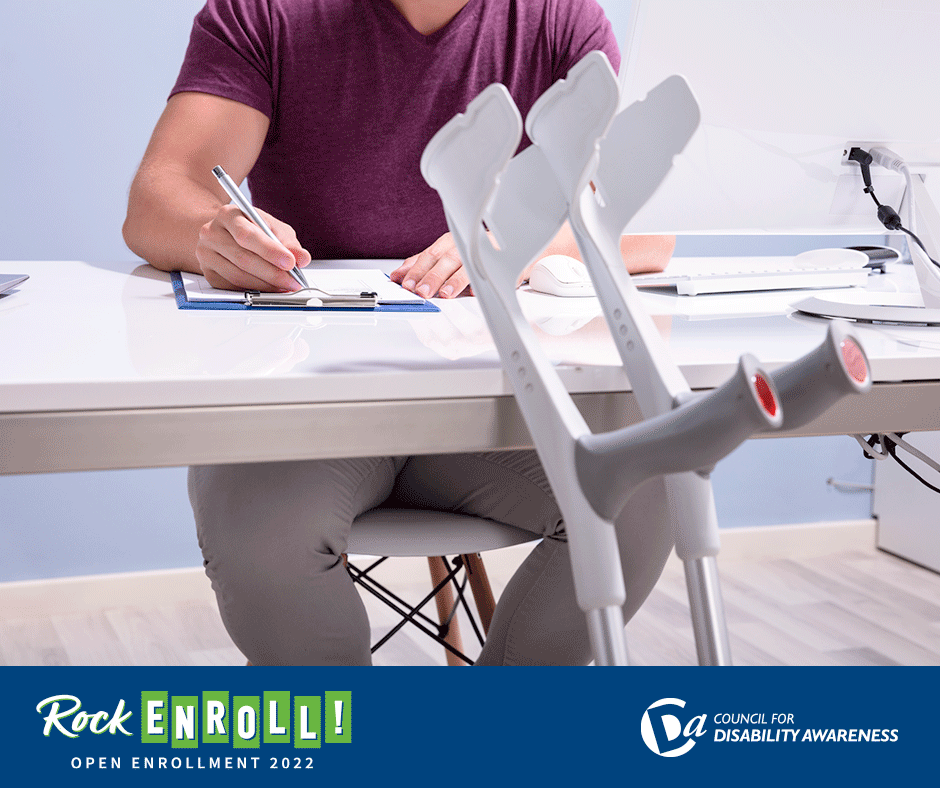Editor’s Note: When most of us think about “open enrollment” for benefits through our employers, we rarely—if ever—think about benefits we passively pay into through our payroll FICA taxes, such as Social Security Disability Insurance. Steve Perrigo from CDA member company, Allsup, writes an easy-to-read post on this important benefit.
October is the kick-off for healthcare benefits enrollment for many U.S. workers. While you don’t technically “enroll” in Social Security Disability Insurance (SSDI), you participate in a process of becoming covered because of your work—specifically the earnings you receive year by year.
SSDI is an insurance policy that you pay into via your FICA taxes, and your benefit amount and insured status is based on all the years you worked. More than 159 million American workers have access to this federal disability insurance. The Social Security Administration (SSA) oversees SSDI, and they follow a stringent disability review process for applicants.
If you experience a life-changing disability—and have to stop working – you should apply. The income and benefits you receive (that you’ve paid for) can be vital for your financial future, whether you return to work or reach Social Security retirement age.
The agency looks at medical and work history to determine who qualifies for SSDI benefits. Generally, to qualify for SSDI, you must:
-
-
-
-
-
-
- Be between 21 and full retirement age.
- Have worked at least five of the last 10 years and paid FICA taxes during that time.
- Be unable to work in any capacity because of a mental or physical impairment that’s expected to last at least 12 months or be terminal.
- Be under the care of a healthcare professional who can confirm severity of medical condition(s).
-
-
-
-
-
How Your Social Security Disability Benefits Are Calculated
The SSA determines your benefit amount based on your lifetime average earnings before you became unable to work. Your payment amount is calculated using your “covered earnings.” This refers to money you earned at jobs where you paid FICA taxes as an employee or being self-employed.
Your SSDI monthly benefit is based on your average covered earnings over a period of time, which is referred to as your average indexed monthly earnings (AIME). The SSA uses these amounts in a formula to determine your primary insurance amount (PIA). This is the basic amount used to establish your benefit.
The maximum benefit you can receive in 2022 is $3,345 per month, up from $3,148 in 2021–a 6 percent increase. The SSA offers benefits calculators you can use to obtain an estimate of your monthly benefits. This year, the average SSDI payment for an individual is $1,358 while the average monthly benefit for a recipient with a spouse and children is $2,383.
The Process To “Enroll” For SSDI: Quarters of Coverage
The Social Security Administration uses the term “quarters of coverage” to explain how you become enrolled in SSDI as a covered worker. In 2022, the amount of earnings required for a quarter of coverage (QC) is $1,510. The terms “quarter of coverage,” “Social Security credit,” and simply “credit” are all used interchangeably. A QC is the basic unit that determines whether you are insured under the Social Security program. It is not possible to earn more than four QCs in one year, no matter how much money you make.
Every year the amount of earnings necessary for credits increases slightly as average earnings levels go up. The credits you earned stay on your Social Security record, even if you change jobs or have no earnings for a while.
You need at least 10 years of work (or 40 QCs) to qualify for Social Security disability benefits. The SSA bases the amount of your benefit on your highest 35 years of earnings.
How To Claim SSDI
To receive Social Security Disability Insurance benefits, you must apply to the SSA. The initial application and the detailed information you provide are critical to getting benefits without an appeal. You can complete the application on your own, or have a disability representative assist with the complexities of proving your claim.
The SSA reviews applications to determine whether you qualify for monthly Social Security benefit payments. This sounds simple, but you must have medical evidence and documentation to prove you meet the legal definition of disabled, and carefully complete the forms because it’s possible to make simple mistakes that could lead to a denial.
As American workers search for answers to keep themselves and their families protected in uncertain times, it’s important to recognize SSDI for the increasingly valuable income and security it offers. It’s a significant protection available to millions of employees who simply have been unaware that they’re already enrolled.






